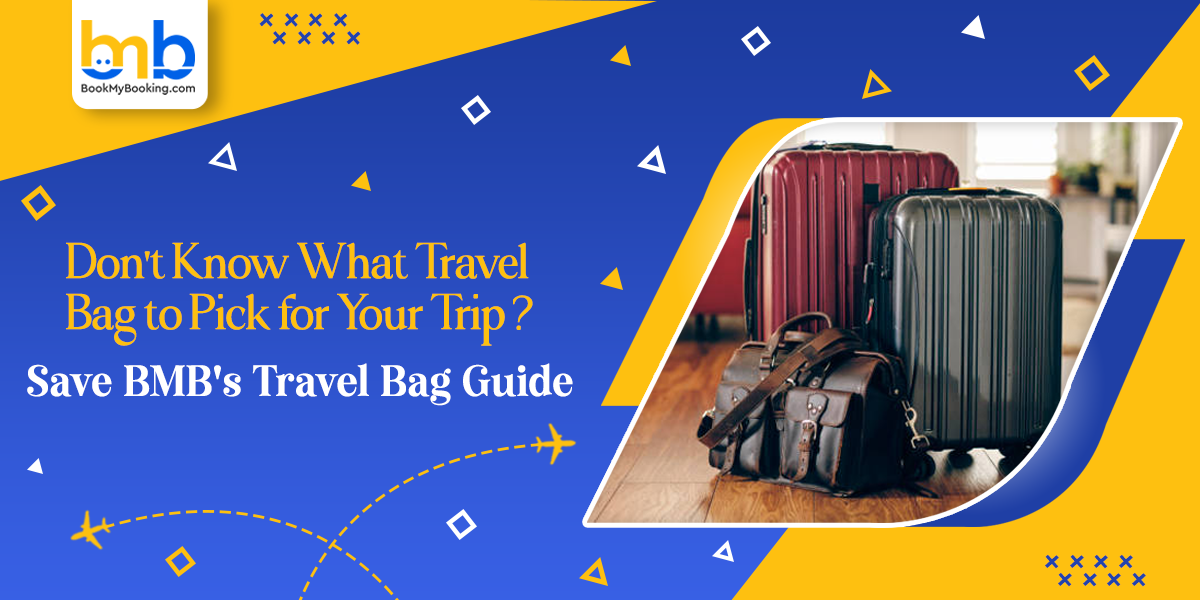Ever stood in an airport queue, awkwardly juggling a bulging backpack while others rolled past with sleek, compact luggage? Or you've packed a giant suitcase for a weekend trip only to realise you needed just half of it. Picking the wrong travel bag doesn't just add inconvenience; it can ruin your trip before it even begins.
Whether you're heading for a two-day city break, a month-long international tour, or a wilderness adventure, the bag you choose matters just as much as what you pack in it. And with new designs, smarter compartments, airline baggage rules, and minimalist travel trends shaking things up, choosing the right travel companion in 2025 requires more than guesswork.
This blog is your complete travel bag-buying guide, backed by real tips, updated airline standards, and expert recommendations. We'll break down types, sizes, features, and flight restrictions to help you find the perfect match.
Step One — Identify the Purpose of Your Trip
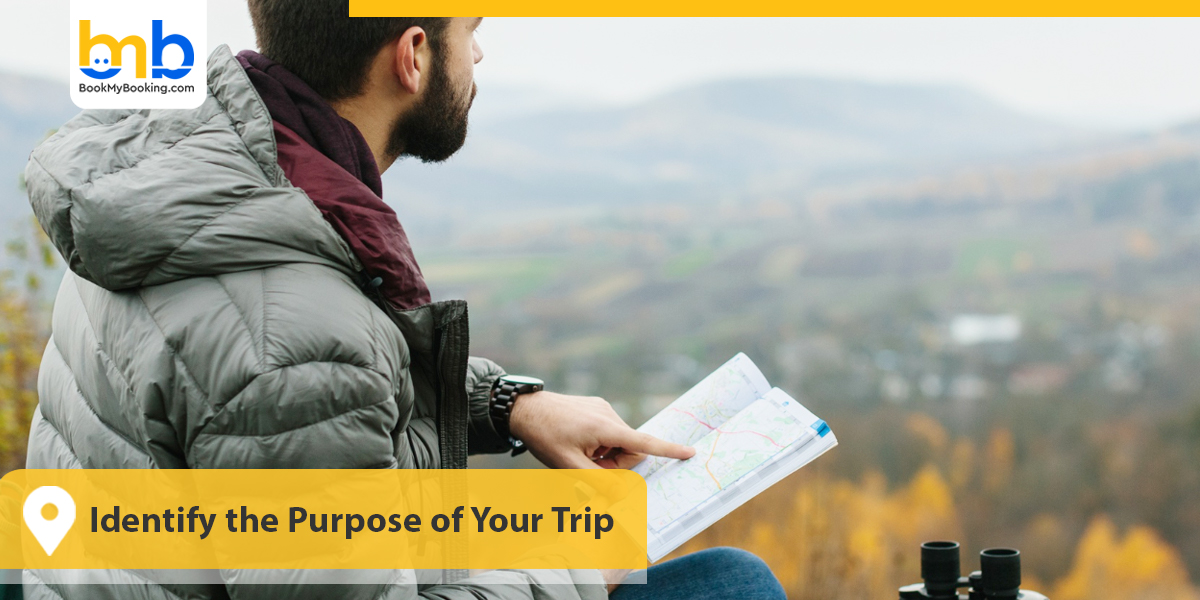
Before diving into brands and bag styles, let's take a step back. The first rule in any travel bag guide is that your destination, trip duration, and travel style determine the bag you need and not trends or aesthetics.
Ask yourself:
1. How long are you going for?
- Weekend Getaway (1–2 days): Opt for lightweight travel bags for flights, like a stylish duffel or compact carry-on. Overpacking is the #1 mistake for short trips.
- 1-Week Vacation: You'll need space for multiple outfits, as well as shoes, electronics, and toiletries. A medium-sized rolling suitcase or travel backpack works best.
- 1+ Month or Multi-Country Trip: Consider using modular packing with a large suitcase and a detachable daypack. You need to think in layers—clothes, gadgets, medicine, and essentials for every climate.
2. What type of destination?
- Urban destinations: Best travel backpacks for Europe are anti-theft, laptop-friendly, and easy to carry on trains.
- Wilderness or rural trips: Waterproof backpacks with good back support are essential—hiking and outdoor terrain demand minimalist travel packing tips and weather-resistant bags.
- Business or luxury travel: Go for smart suitcases or structured weekender bags. Look for compartments that protect gadgets, formal clothes, and documents.
3. What kind of traveller are you?
- Minimalist explorer → One sleek backpack
- Family packer → Mix of check-in + cabin bags
- Frequent flyer → Lightweight rolling luggage with 360-degree wheels
The more clearly you define your travel style, the easier it is to choose the best travel bags for 2025, tailored to your specific needs.
4. Rolling Backpacks
- Best for: Hybrid travel—urban + off-road
- The lovechild of a backpack and a suitcase. They roll when you want to glide and convert into a backpack when needed.
- Pros: Great for uncertain terrain, especially train stations or cobbled streets
- Cons: Heavier usually costs more.
5. Weekenders, Totes & Sling Bags
- Best for: Short local getaways, daily use at your destination
Weekenders are compact, stylish, and can double up as a secondary cabin bag. Totes are perfect for city strolls, while slings offer quick access on the go.
Step Two — Know the Types of Travel Bags
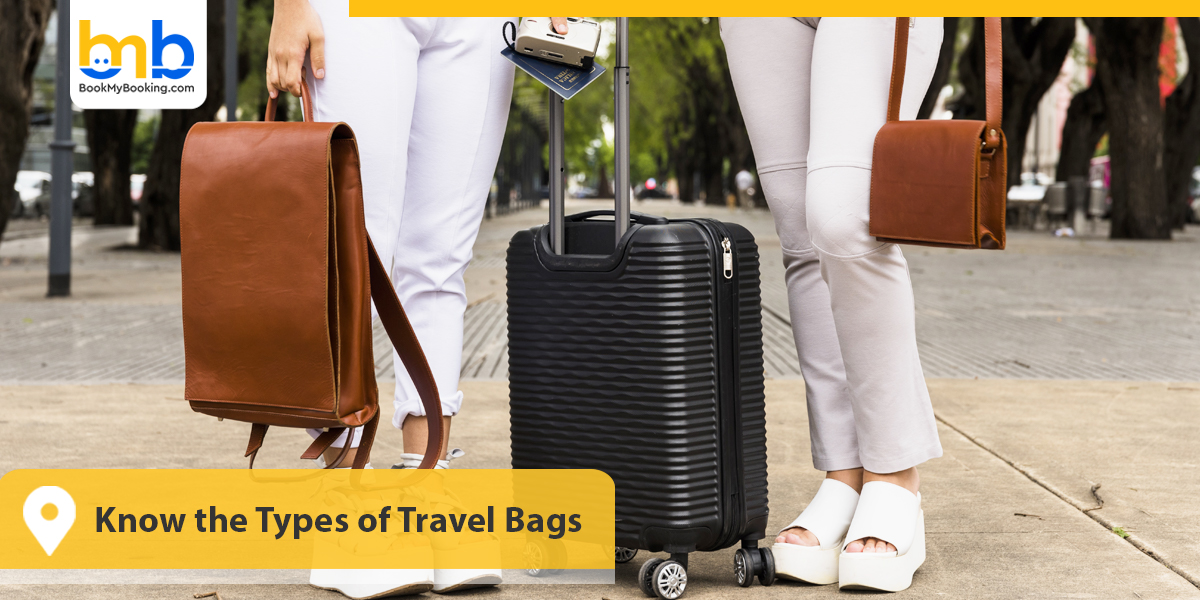
So you've figured out where you're going and for how long—but now comes the real challenge: What kind of travel bag is right for your trip? Let's talk to the market. It is flooded with choices, from high-tech backpacks to luxury suitcases and rugged duffels. Each has its strengths (and weaknesses), and your travel experience will drastically differ depending on what you choose.
- Travel Backpacks
- Best for: Backpackers, solo travellers, adventure trips, multi-city tours
- Not ideal for: Business travel, formal trips, people with back issues
Travel backpacks are the go-to choice for those constantly on the move—especially across Europe, Southeast Asia, or South America. They're designed to be worn on your shoulders and usually include ergonomic straps, hip belts, sternum support, and front-loading access (like a suitcase opening). Backpacks come in various sizes, typically from 35L to 70L. For minimalist travel packing, a 40L backpack is ideal for carry-on compliance. If you're planning extended international travel, choose one with a detachable daypack for daily use.
Pros:
- Hands-free mobility
- Easier to carry over stairs, cobblestones, and rough terrain
- Compact and often cabin-approved
Cons:
- Can strain the back/shoulders if overloaded
- Items can be harder to organise than in a suitcase
2. Rolling Suitcases
- Best for: Flights, business trips, luxury holidays, family vacations
- Not ideal for: Rural terrain, off-road travel, hostels with no elevators
This is the most common form of luggage and for good reason. Rolling suitcases, available in carry-on and checked sizes, are easy to manoeuvre and ideal for well-planned, urban-centric travel. Hard-shell models protect fragile items, while soft-shell suitcases are lighter and more expandable. If you're wondering how to choose a travel bag that fits airline rules, this is often the safest bet. Most brands now design their carry-ons to match the strict carry-on luggage dimensions used by global airlines.
Pros:
- Great for organisation with compartments and compression straps
- Glides through airports and hotels effortlessly
- It is ideal for protecting electronics or formal wear
Cons:
- Not suitable for uneven ground or stairs
- Bulky if not packed smartly
3. Duffel Bags (and Rolling Duffels)
- Best for: Weekend road trips, sports travel, flexible packers
- Not ideal for: Long-distance walking, carrying fragile items
Duffel bags have evolved from simple gym bags into travel powerhouses. Modern designs come with rolling wheels, hidden compartments, and backpack straps. Their soft, unstructured shape makes them easier to store in car trunks or overhead bins, especially on budget airlines. For the best bags for weekend trips, a 30–40L duffel is often the ideal choice. If you're checking it in, opt for something with a capacity of 70L or more, featuring reinforced corners.
Pros:
- It is very spacious, and it is easy to throw extra items in
- Lightweight when empty
- Some models convert to backpacks for hybrid use
Cons:
- Lack of structure = tough to organise
- Shoulder strain if there are no wheels

4. Rolling Backpacks
- Best for: Multi-style travellers, train travel, students abroad
- Not ideal for: Hardcore trekking or mountaineering
Rolling backpacks give you the best of both worlds. Roll it when the terrain is smooth, and strap it on when the path gets tricky. They're beneficial for travellers navigating a mix of airports, cobbled cities, and hostels with no elevators.
Pros:
- Versatile for different terrains
- Avoids back strain with roller mode
- Ideal for Europe or multi-modal travel
Cons:
- Heavier than standard backpacks
- Wheels add bulk and reduce interior space
5. Weekenders, Totes, and Sling Bags
- Best for: Short trips, personal item carry-on, day excursions
- Not ideal for: Long stays or trips requiring heavy packing
Weekender bags are stylish, compact, and perfect for a quick getaway. You'll often see them as the go-to choice for elegant travel bags for women and men. Totes and slings make ideal secondary bags for sightseeing, storing essentials like documents, electronics, and snacks.
Pros:
- Easy to carry, quick access to items
- Compact enough for under-seat airline storage
- Many stylish, gender-neutral options
Cons:
- Limited capacity
- No wheels = shoulder or hand strain if overpacked
Step Three: Understand Airline Rules and Restrictions

When it comes to air travel, your bag may look perfectly lightweight, stylish, and just the right size, but if it doesn't match airline regulations, you're setting yourself up for a frustrating airport experience. That's why knowing the ins and outs of airline baggage rules is just as important as choosing the type of bag itself.
- Carry-on luggage:
Most travellers aim to keep things compact enough to skip baggage claim altogether. The catch? Airlines have their interpretation of what qualifies as carry-on. On international flights, the standard dimension for cabin baggage is around 21 to 22 inches in height, including wheels and handles. In terms of total linear dimensions (that's length + width + height), you'll need to stay within 45 inches or 115 cm. Weight limits vary too—some airlines cap it at 7 kg, while others are more forgiving at 10 or even 12 kg. If you're shopping for something new, opt for lightweight travel bags for flights that clearly state they're "carry-on compliant."
- Checked luggage:
This is your go-to for longer trips, cold-weather travel, or when you can't pack light (no judgment here). Most airlines allow one checked bag weighing up to 23 kg (51 lbs) or 50 lbs, with a maximum linear size of 62 inches (158 cm). If your bag exceeds either the weight or size limit, you can expect additional charges, which are often surprisingly steep. That's why every travel luggage guide for beginners stresses measuring and weighing your suitcase before heading to the airport. Choose something durable but not overly heavy when empty, especially if you're aiming to get the most out of that 23 kg allowance.
- Personal item:
Airlines also allow one personal item, and this is often overlooked in travel planning. An individual item should fit under the seat in front of you and typically includes laptop bags, small backpacks, or compact totes. Savvy travellers use this to their advantage—packing tech, documents, snacks, and a change of clothes in a secondary bag that complements their carry-on. If you're looking for stylish travel bags for women or men, they should be both fashionable and functional at the same time. It also gives you extra space without extra fees.
Note: It's essential to remember that not all airlines adhere to the same rules. Carriers like Ryanair, Wizz Air, and AirAsia are known for their strict cabin bag policies. You may be allowed just one personal item unless you pay for priority boarding or extra baggage. On the other hand, premium airlines such as Emirates, Qatar Airways, or Singapore Airlines typically offer more generous bag weight restrictions for airlines. To avoid confusion, always double-check the airline's baggage policy before your flight. A quick look at their website or even a search for your airline's name followed by "carry-on policy" can save you from being repackaged at the check-in counter.
Finally, be cautious of online bag descriptions. Many products are labelled "cabin-friendly" or "carry-on size," but what works for one airline might not work for another. When purchasing a new bag, look for ones specifically designed for international flights and compare the bag's measurements to your airline's exact dimensions. This one simple step can help you avoid extra charges, gate checks, or the awkward task of unpacking at the airport.
Step Four: Match the Bag to Your Type of Trip
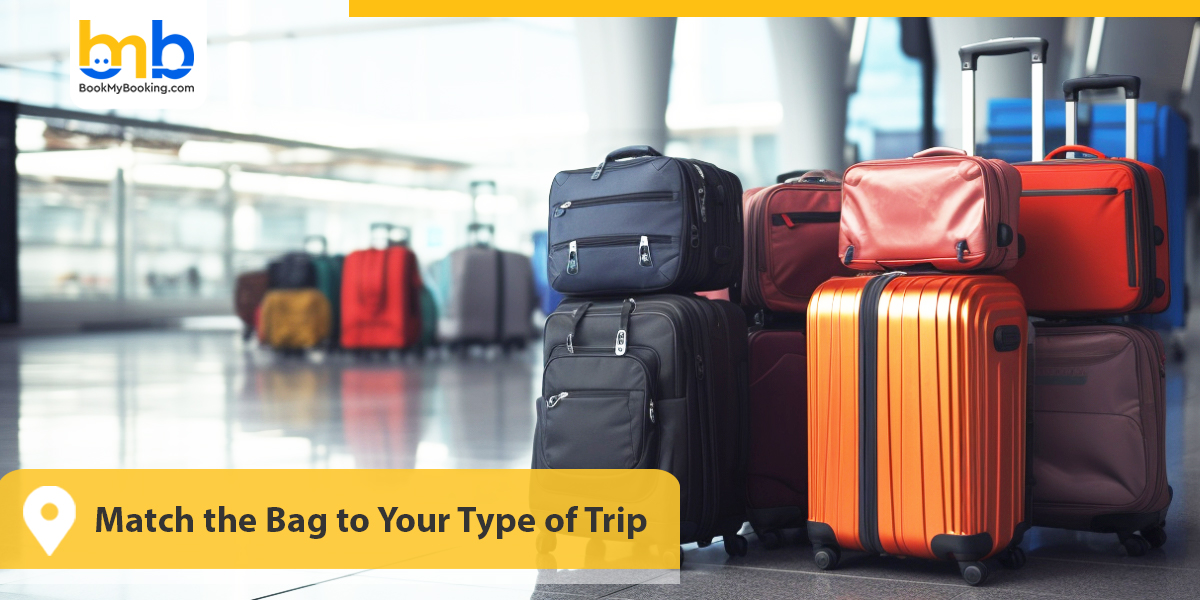
This is the part most travellers overlook. We spend hours comparing zippers and compartments, but forget to ask the most critical question: What kind of trip am I packing for? That's where everything starts.
Different types of travel call for various kinds of bags. A short business trip demands something compact and professional. A multi-city Europe adventure? You'll want a hands-free solution that handles cobblestones—heading to a wedding with multiple outfits? Hello, checked luggage. Below, we'll break it all down so you can pick what fits your journey, not just your closet.
● Weekend Getaways & Short Trips (1–3 Days)
For short trips, the best bag is always one that you can carry on board. Look for a compact carry-on suitcase, a well-structured duffel, or a sleek travel backpack that meets airline dimensions. Aim for something between 20–30L in capacity, especially if you're planning to follow minimalist travel packing tips. The key here is organisation. Internal compartments help you avoid overpacking. Choose bags that come with built-in toiletry sections or shoe compartments—these are super helpful for a quick escape. Suppose you're into style as much as convenience. In that case, this is the perfect opportunity to utilise stylish travel bags for women or men, think leather weekender bags, high-quality nylon backpacks, or sleek cabin suitcases with spinner wheels.
- One-Week Trips (4–7 Days)
This is the zone where versatility becomes your best friend. Your bag needs to be spacious enough for a week's worth of clothes but still light enough to handle with ease. A carry-on suitcase with compression panels or a larger waterproof travel backpack (35–45L) is ideal for this purpose.
This is also the sweet spot where many travellers debate: duffel vs rolling luggage. Here's a quick way to decide:
- If your destination is walkable, paved, or urban, rolling luggage is easier.
- If you're hopping on boats, buses, or remote trails, a duffel or backpack is a better option.
The best bags for weekend trips tend to overlap with this category, so investing in a high-quality one will yield multiple uses.
● International or Multi-City Trips (10+ Days)
When it comes to long-haul or international travel, especially if you're exploring multiple cities, it's time to take things seriously. Think durability, security, and weight distribution. This is where the best travel backpacks and suitcases shine. For a long trip, consider:
- A 50–70L travel backpack with ergonomic support, lockable zippers, and a front-opening design (so it opens like a suitcase).
- Or a large rolling suitcase if you're not planning to move around a lot.
This is where a travel bag guide for international travel becomes incredibly handy. For example, if you're going to Europe and navigating public transport and cobbled streets, opt for a backpack with good ventilation and waist straps. The best travel backpacks for Europe are designed with lightweight frames, weather-resistant materials, and clever compartments for electronics and valuables. You have to remember that international trips often involve multiple airlines. You'll need to double-check bag weight restrictions for airlines; a few extra kilos can cost you dearly.
- Business Trips or Conferences
Business travel is a category of its own. You want your bag to be lightweight, professional, and functional. A slim carry-on suitcase, a tech-friendly backpack, or even a rolling briefcase works best. Look for a bag with a dedicated laptop sleeve, document holders, and easy-access pockets for chargers, pens, and other essentials, such as passports. Wheels are a bonus if you're moving through airports quickly. Here, what to look for in a travel bag includes a clean silhouette, durable zippers, water resistance, and compartments that keep your formal wear wrinkle-free.
● Adventure Travel & Offbeat Destinations
Are you heading on a mountain trek, jungle lodge, or desert camp? A suitcase just won't cut it. You need something rugged. A waterproof travel backpack, adventure duffel, or even a convertible bag that shifts from backpack to duffel mode is your best bet. We suggest you prioritise material. Look for ripstop fabric, weatherproof coatings, and padded straps. External lash points are a bonus for gear like sleeping mats or tripods.
Step Five: Prioritise Key Features and Build Quality
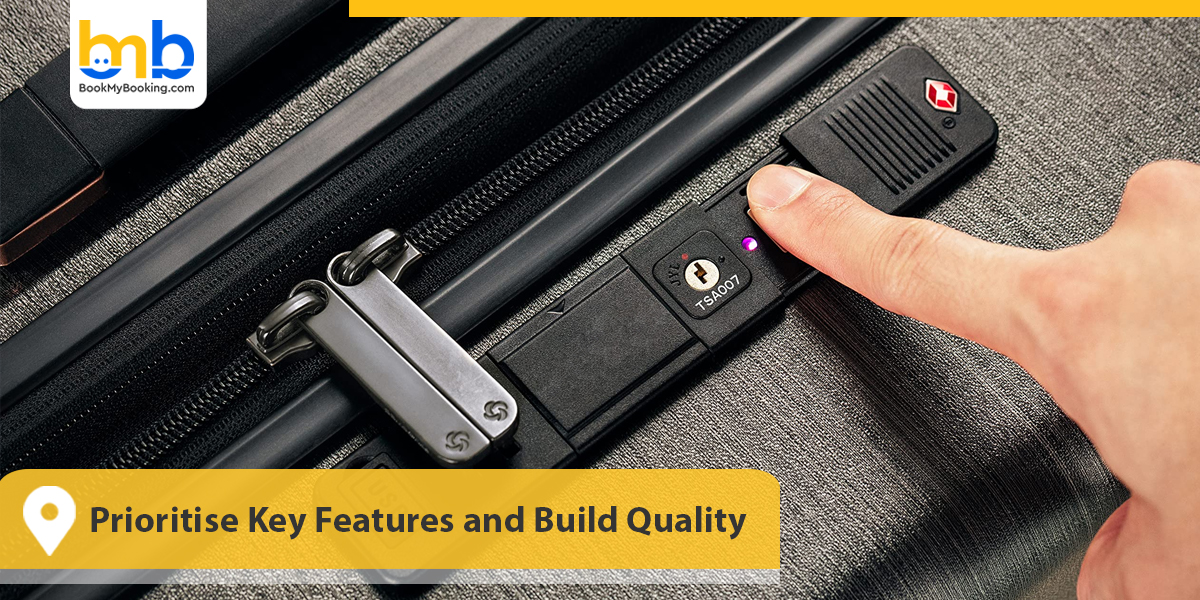
Let's get one thing straight: even the most stylish, perfectly sized bag won't hold up if it can't survive a rough baggage belt, a rainy airport tarmac, or a sprint through a cobbled alley in Lisbon. That's why this stage of your travel bag search is all about examining the features that make a real difference.
- Zippers: Start with the most overlooked but arguably most essential component, zippers. Look for brands that use YKK zippers, which are known for their durability and smooth operation. Weak or thin zippers are the first to fail, and when your bag's only security comes undone mid-journey, it's never fun. Also, double zippers that lock are crucial if you're travelling internationally or through high-traffic areas. Security is not just about padlocks; it's about structural integrity.
- Material and fabric quality: Think beyond "water-resistant." If you're buying for real travel, not just weekend stays, go for ballistic nylon, high-denier polyester, or even polycarbonate (for hard-shell suitcases). If you're heading somewhere rainy, humid, or unpredictable, a waterproof travel backpack is worth the investment. Not only do they protect your clothes and electronics, but they also hold their shape better after wear and tear.
- Handles and straps: It is one of the most essential elements, especially if you're leaning toward duffels or backpacks. Padded shoulder straps aren't optional—they're the difference between comfort and pain, especially when you're wearing your pack for hours. Adjustable chest or waist straps also make a massive difference in load distribution, especially for larger bags. When it comes to suitcases, check if the handle mechanism is both telescopic and sturdy. Wobbly handles are a red flag, especially if you're pulling the bag over long distances.
- Wheels: They are another prominent feature to consider in roller bags. Inline skate wheels are more durable than the cheaper plastic kind, especially if you're going to walk long airport terminals or rougher terrain. Spinner wheels (those 360-degree rotating ones) are great for smooth, flat surfaces and give you more manoeuvrability in tight spaces. But be cautious—they don't always perform well on cobblestone streets or unpaved roads. If you're trying to decide between models, this is a huge factor.
- Compartments and layout: A well-organised interior can save you hours of frustration. Look for bags with separate compartments for shoes, toiletries, and dirty clothes. Compression straps inside help you pack more efficiently and reduce wrinkles. Exterior pockets are ideal for items that require quick access, such as boarding passes, snacks, or tech gear. Many of the best travel bags for 2025 now come with dedicated tech compartments, padded laptop sleeves, USB charging ports, and even RFID-blocking pockets for your passport and cards.
- Bag weight when empty: Some bags might look amazing, but weigh 5–6 kg before you even start packing. That's a significant dent in your airline weight allowance. Prioritising lightweight travel bags for flights helps you stay within limits without sacrificing the essentials you need to bring. You'll find this tip in every carry-on vs checked luggage guide, and for good reason, it impacts your experience every time you fly.
- Aesthetics and style: While function should always come first, it doesn't hurt to feel good about the bag you're carrying. From minimalist neutrals to bold colours, brands now offer options that blend practicality with personality. Whether you're looking for stylish travel bags for men or elegant options for women, don't compromise; just be sure your style pick still meets the practical checklist above.
Step Six: Carry-On vs Checked Luggage Guide
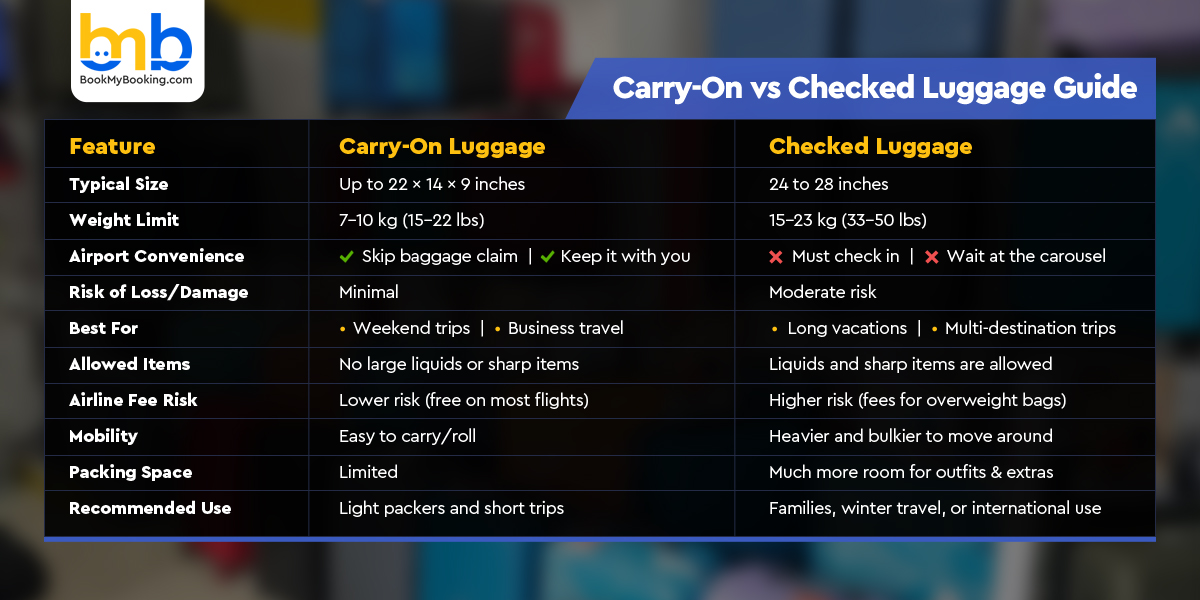
● The Benefits of Carry-On Luggage
Carry-on bags are perfect if you want to travel light and move fast. Skipping checked baggage means no waiting at the carousel, fewer chances of lost luggage, and less hassle overall. Ideal for short trips or savvy packers following minimalist travel packing tips, carry-ons force you to pack only essentials.
Airlines typically limit carry-ons to around 7-10 kg (15-22 lbs), so selecting lightweight travel bags for flights is crucial. Many travellers opt for backpacks or compact rolling suitcases that fit easily within overhead compartments.
● When to Choose Checked Luggage
Checked bags are the best option if your trip requires more clothing, gear, or souvenirs. They give you the freedom to pack bulky items, gifts, or extra shoes without worrying about space.
However, checked luggage comes with weight restrictions (typically 23 kg or 50 lbs) and the risk of delays or lost baggage. It’s a trade-off between capacity and convenience. For more extended vacations or international travel with varied climates, checked bags are often necessary.
● Combining Both for Flexibility
Many travellers combine a checked suitcase with a carry-on backpack or tote. This approach strikes a balance between space and convenience: the checked bag accommodates the bulk, while the carry-on stores valuables, electronics, and a change of clothes.
Hybrid bags and stylish travel bags for women/men make this easier than ever. With tech compartments and ergonomic designs, they keep your essentials secure and accessible.
● Making the Right Choice for Your Trip
Ask yourself:
- How long is your trip?
- What’s your packing style?
- What are the airline rules?
- How much do you want to carry around?
If you prefer hassle-free travel and pack light, carry-ons win. If you need space and flexibility, go for checked luggage. And if you want the best of both worlds, a smart combo works perfectly.
Step Seven: Travel Bag Size Guide
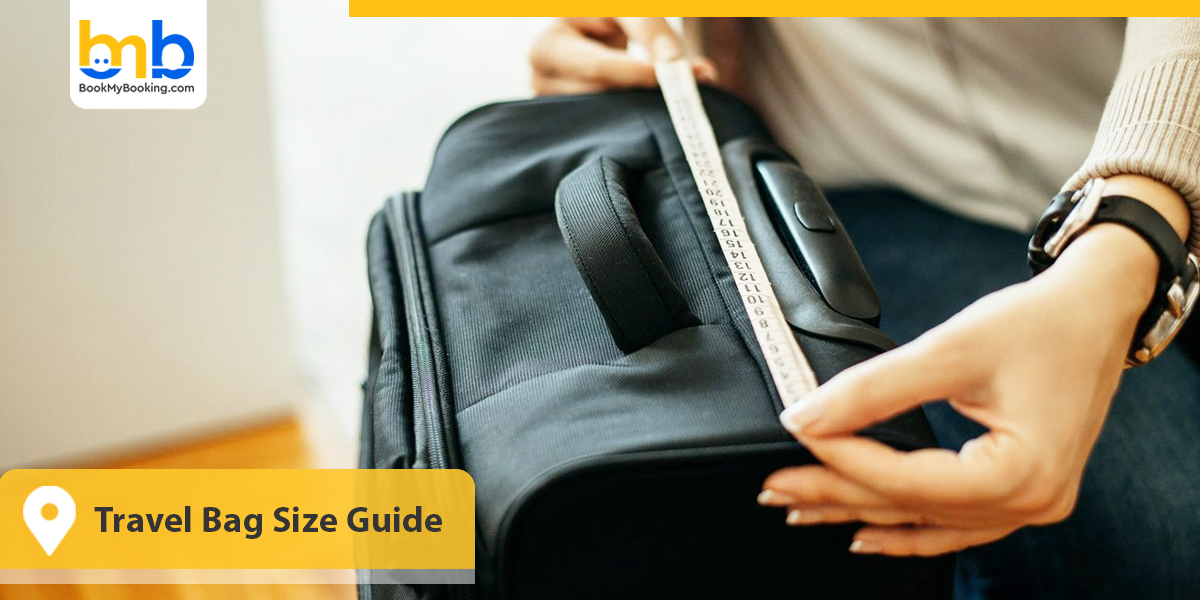
● 1. Carry-On Size Essentials
Carry-on luggage is the holy grail for travellers who want speed and convenience. Most airlines allow carry-ons that are approximately 22 x 14 x 9 inches (56 x 36 x 23 cm), including handles and wheels. Staying within these dimensions means your bag fits in the overhead compartment, allowing you to avoid the lines for checked baggage.
Ideal for trips lasting a few days or for travellers who have mastered minimalist travel packing tips, carry-ons keep everything close. But remember: each airline has its own rules, so always double-check their carry-on luggage dimensions before flying.
● 2. Checked Luggage Dimensions and Weight
For more extended vacations or trips that require more packing, checked bags are your go-to. Standard sizes range between 24 and 28 inches in height. While larger bags hold more, they can become heavy quickly.
Weight is a critical factor here. Most airlines enforce bag weight restrictions for checked luggage, typically between 15 kg (33 lbs) and 23 kg (50 lbs). Exceeding these limits can result in additional fees, so choose a size that you can comfortably manage and pack wisely.
● 3. Backpack Sizes for Different Trips
Backpacks offer a flexible size range:
- Daypacks (15-25L): Great for daily use, city tours, or carry-on essentials.
- Mid-sized travel backpacks (30-45L): Suitable for short trips (3-7 days).
- Large backpacks (50-70L): Designed for extended travel, trekking, or adventure trips.
Choosing the right backpack size ensures comfort without overpacking. For example, the best travel backpacks for Europe usually fall between 40-50 litres, big enough for essentials, small enough to stay mobile.
● 4. How to Decide the Right Size for You
Consider your trip length, destination, and how much you like to pack. Are you a minimalist traveller who loves carry-ons or someone who needs options and outfits for different occasions?
Always factor in airline restrictions and your physical comfort. A well-sized bag makes moving between airports, hotels, and destinations easier avoiding stress and unexpected costs.
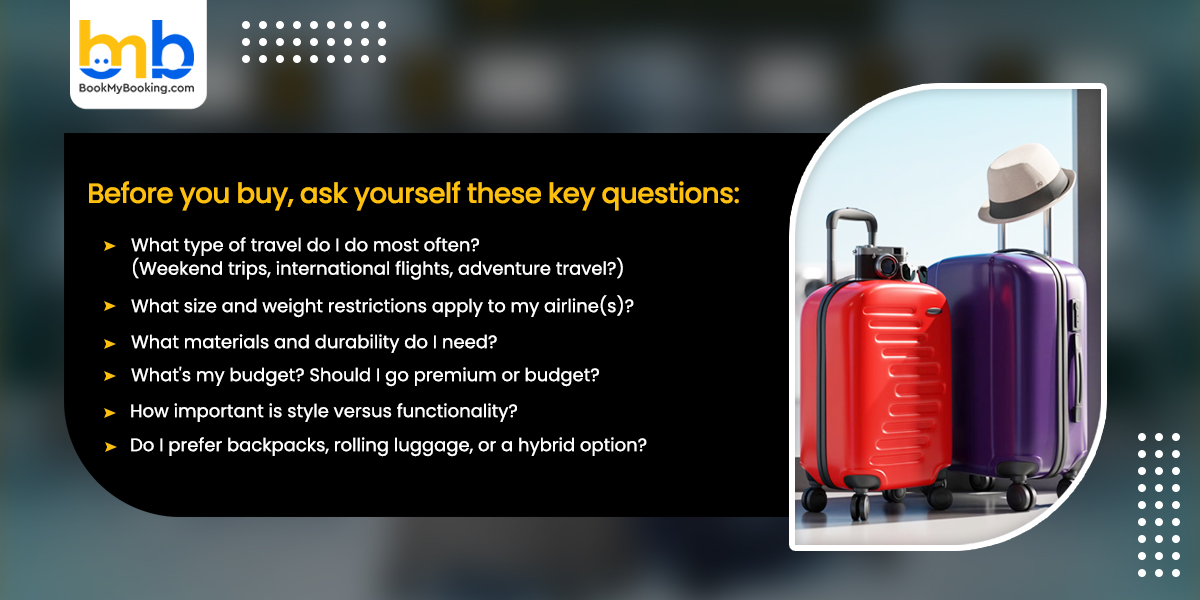
BookMyBooking's Last Word on Picking the Perfect Travel Companion
Choosing the right travel bag can transform your trip from stressful to seamless. With numerous options available, understanding the best travel bags for 2025, knowing how to choose a travel bag, and following a solid travel bag buying guide empowers you to pack brighter and travel lighter. Whether you prefer a sleek carry-on, a durable backpack, or a spacious checked suitcase, the key is to match your bag to your unique travel needs, style, and airline requirements. Keep in mind the tips on materials, size, and weight restrictions to avoid surprises at the airport. With this guide in hand, you're ready to make confident choices and enjoy every journey with ease and style.
Safe travels!


